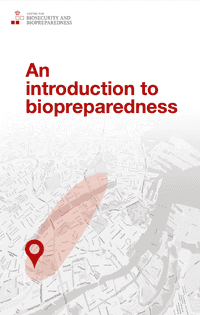An Introduction to Biopreparedness
[Introduction to Biopreparedness]
This book suggests effective ways to prepare for and mitigate both the immediate and longer-term consequences of a biological attack or accident. It draws on the Danish Centre for Biopreparedness and Biosecurity's (experience to suggest a model that other country's can use - either in whole or in part - to establish or improve upon their own biopreparedness systems.
SUMMARY
This guide describes effective ways to investigate and respond to accidents or terrorist attacks involving hazardous biological substances. It includes strategies for quickly responding to biological incidents, practical advice for implementing national biopreparedness systems, as well as an overview of relevant issues, including mass vaccination, quarantine, decontamination, international cooperation, and public communication. This 2019 guide has been written as a companion volume to the Danish Center for Biosecurity and Biopreparedness’ 2015 guide, An Efficient and Practical Approach to Biosecurity. The first volume is a comprehensive guide to establishing national biosecurity systems. The first book also addresses the issue of biopreparedness, but this volume expands on that discussion substantially.
The Danish Centre for Biosecurity and Biopreparedness (CBB) is Denmark’s national biosecurity authority. The center maintains a 24/7 response capability for responding to an accidental or malicious biological incident and is responsible for issuing institutional licenses for working with dual use biological research components. This guide is intended for decision-makers in public health and biosecurity as well as any person that might have a role in responding to a biological incident. For instance, members of the police, military, fire department, and other emergency response services may have important roles in the event of a bioterror attack, even if they do not deal with biological issues on a day-to-day basis. As of September 2021, this document is only available in English and has no scheduled updates.


..png)
